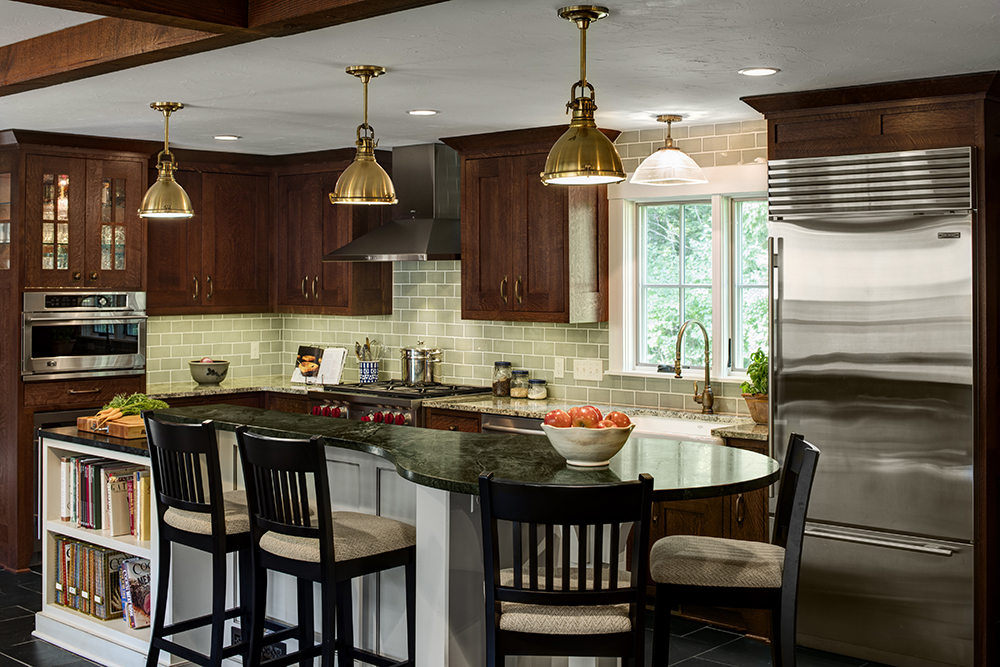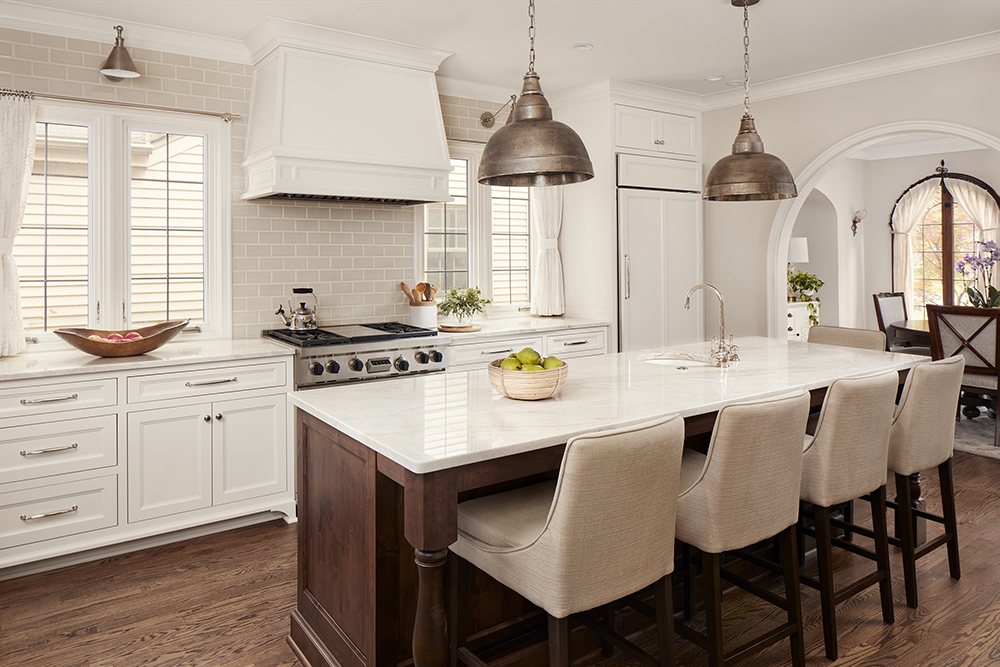When making plans for that new kitchen, it’s important to think about how you’ll be using the space and where specific light sources will be needed. A well though out lighting plan has many layers to it. Let’s explore those layers to help you create a cohesive and functional kitchen.
A M B I E N T | Lights for Navigating
Recessed cans, chandeliers, wall sconces, flush mount fixtures, even natural light – ambient lighting is your foundation, a general “blanket” of light for your kitchen. It helps you navigate your space (without running into things), and it’s really the first step to your lighting plan, serving as the base for all other layers.
T A S K | Lights for Doing
Task lighting may arguably be the most important layer. It helps you complete specific jobs, like meal prep and cooking, in the kitchen. Under cabinet lights over the countertop, pendants above the island, lights at the range – it’s important to see what you’re doing especially when working with sharp knives and other potentially dangerous tools.
A C C E N T | Lights for Feeling
Accent lighting sets the tone for your kitchen, creating a warm and inviting space. It’s often known as the decorative layer. It can also be considered task lighting, but it demands a bit more attention – in-cabinet lights to display dishes or collectibles, beautiful pendants, and other fixtures to highlight a unique aspect of the space. They round off the room to make it feel complete, and with so many options, it’s a great opportunity to really show off your personality.
M O O D | Lights for Changing
Throughout the day, your lighting needs change. During the day, natural light is often sufficient, but as the day progresses you’ll need help from your fixtures to illuminate the space for cooking and cleaning. Entertaining? You’ll want to set the mood. That’s where dimmers come into play. Dimmers can be incorporated into all layers of lighting, so you can adjust the light for your specific needs. For instance, they’re a great option at night or in the early morning when you’re not quite ready for bright lights.
Now that you’re familiar with the various layers of light, it’s important to note that you don’t have to use separate fixtures for each layer. There’s often a lot of overlap.
Happy light planning!









Leave A Comment